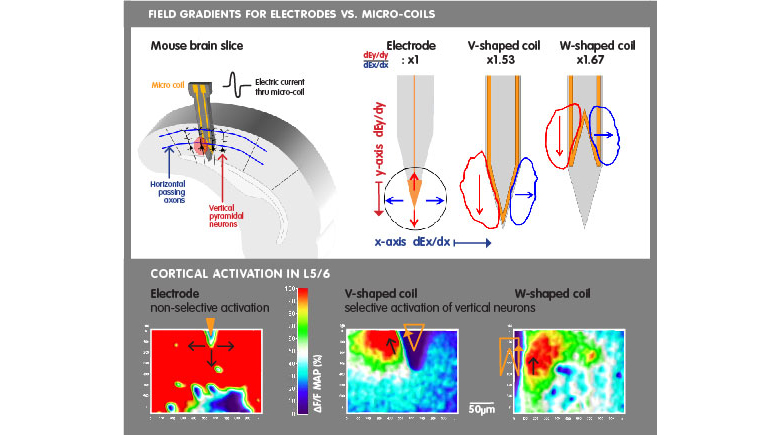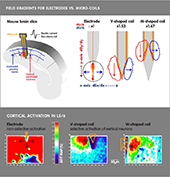
Electrical stimulation via cortically-implanted electrodes has been proposed to treat a wide range of neurological disorders. Effectiveness has been limited however, in part due to the inability of conventional electrodes to activate specific types of neurons while avoiding other types. Recent demonstrations that magnetic stimulation from a micro-coil can selectively activate pyramidal neurons (PNs) while avoiding passing axons suggest the possibility that such an approach can overcome this limitation. To explore this further, we used computer simulations to determine how micro-coil design influences the threshold and selectivity with which pyramidal neurons are activated. A computational model was developed to predict the magnetic and electric fields induced by conventional electrodes as well as by rectangular-, V- and W-shaped coil designs. The more promising designs (V- and W-shapes) were fabricated for use in electrophysiological experiments including in vitro patch-clamp recording & calcium imaging (GCaMP6f) of mouse brain slices. Both V- and W-shaped coils reliably activated layer 5 (L5) PNs but V-coils were more effective while W-coils were more selective. Activation thresholds with double-loop coils were approximately one-half those of single-loop coils, regardless of the design. Calcium imaging revealed that both V- and W-coils better confine activation than rectangular coils or electrodes. Taken together, our results suggest that individual design features of micro-coils can influence both their strength as well as their selectivity. Further, our results also suggest that computer simulations based on electromagnetic theory can provide accurate predictions of physiological results. In summary, our results show how coil design influences the response of cortical neurons to stimulation and are an important step towards the development of next-generation cortical prostheses.

